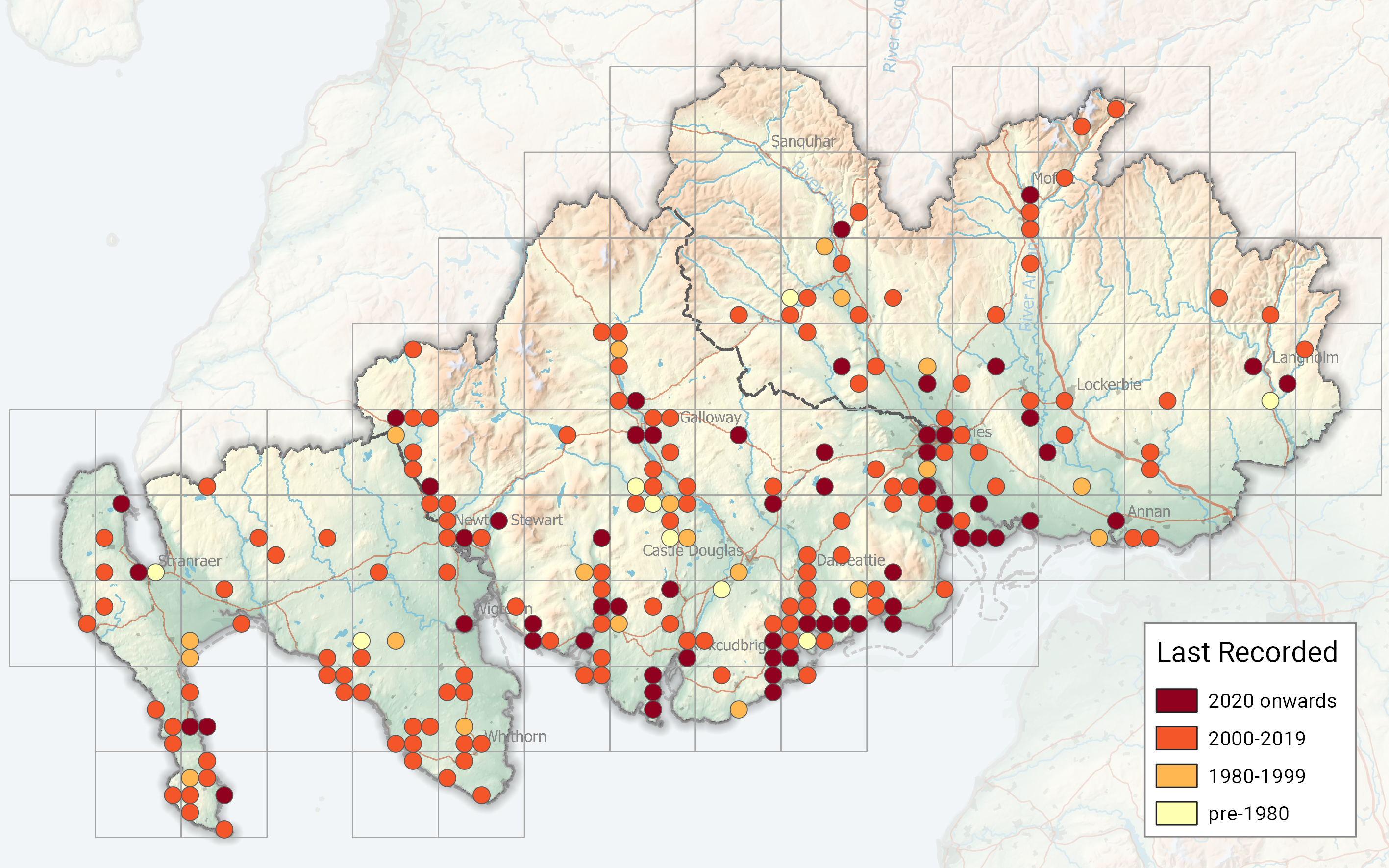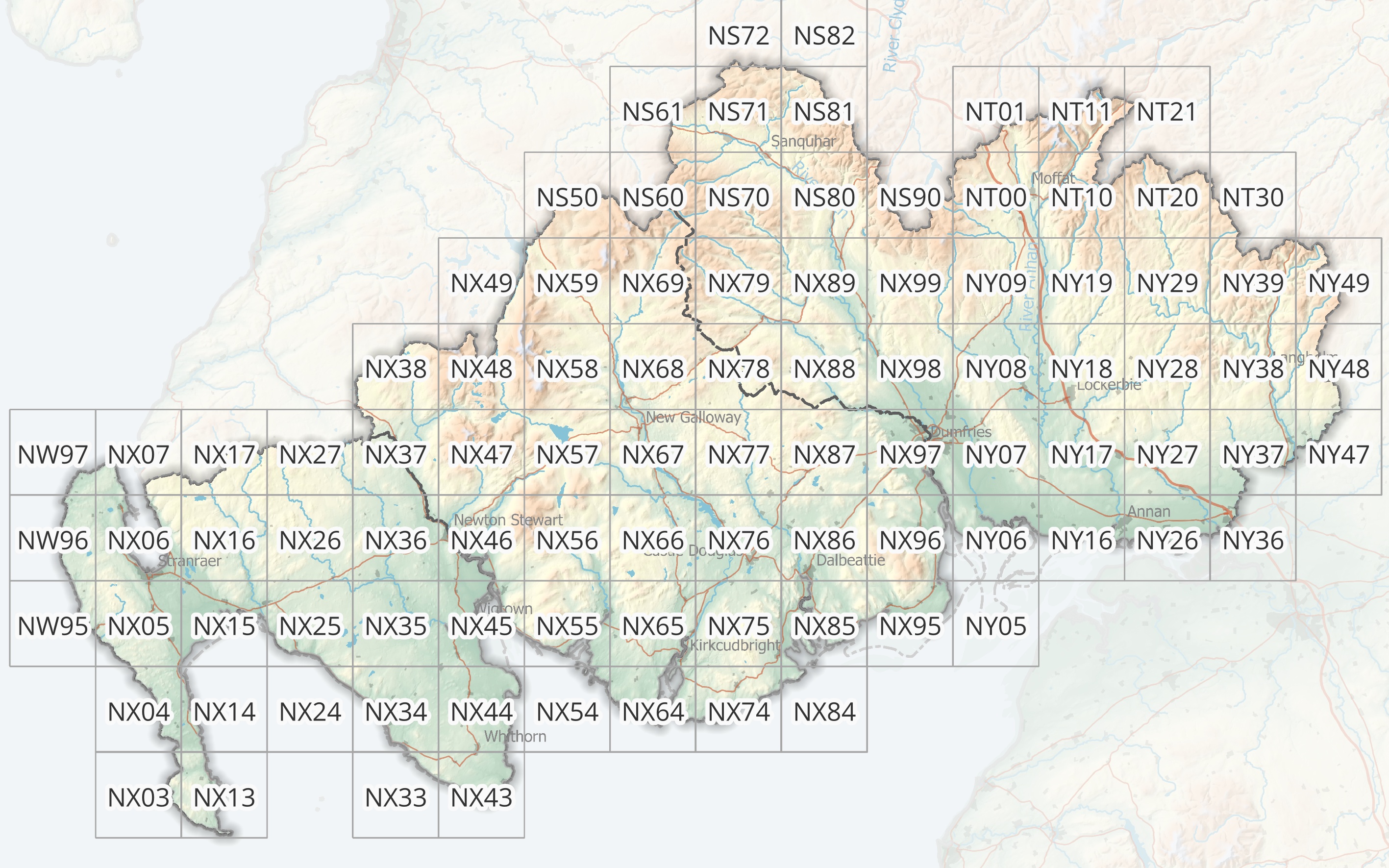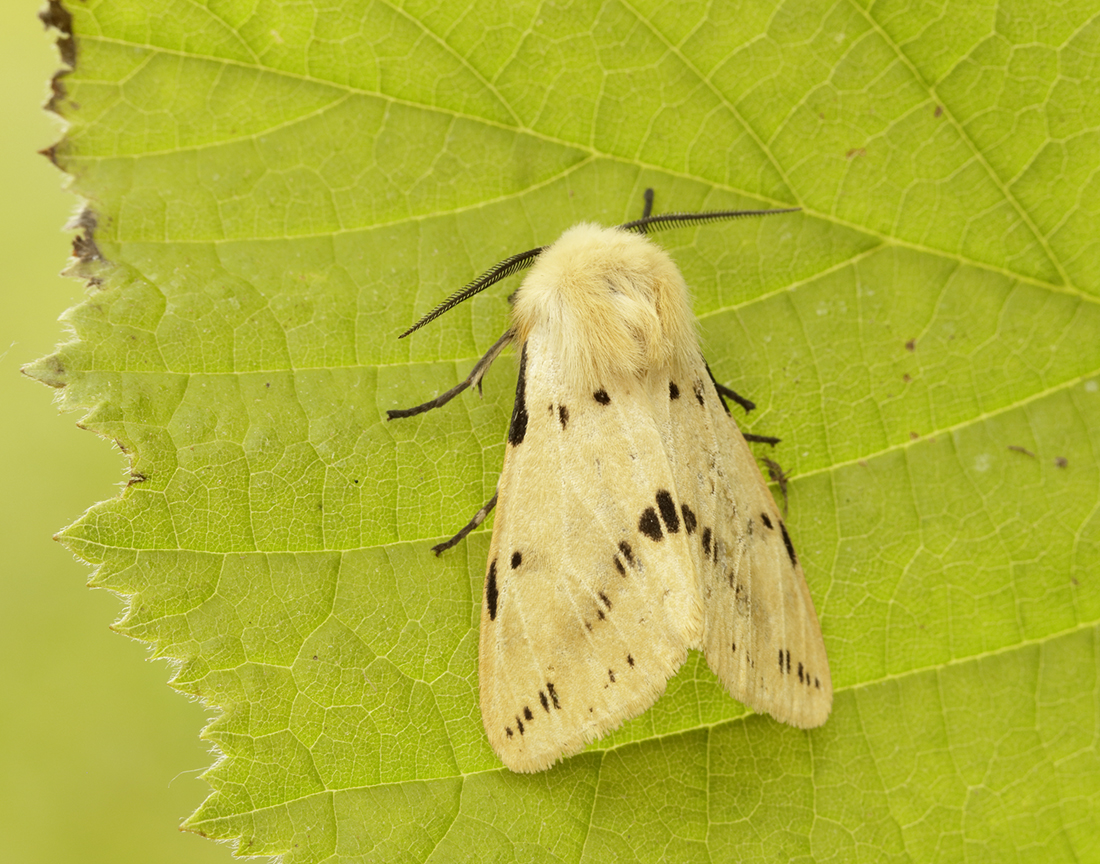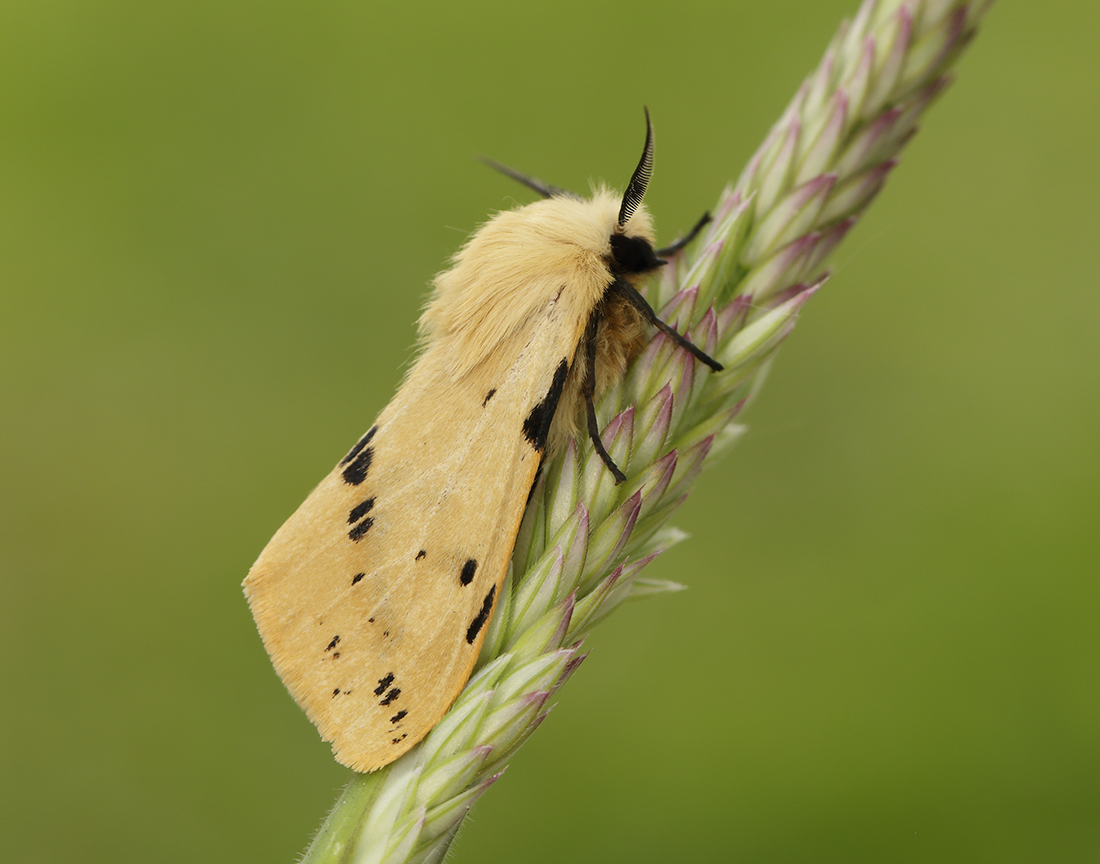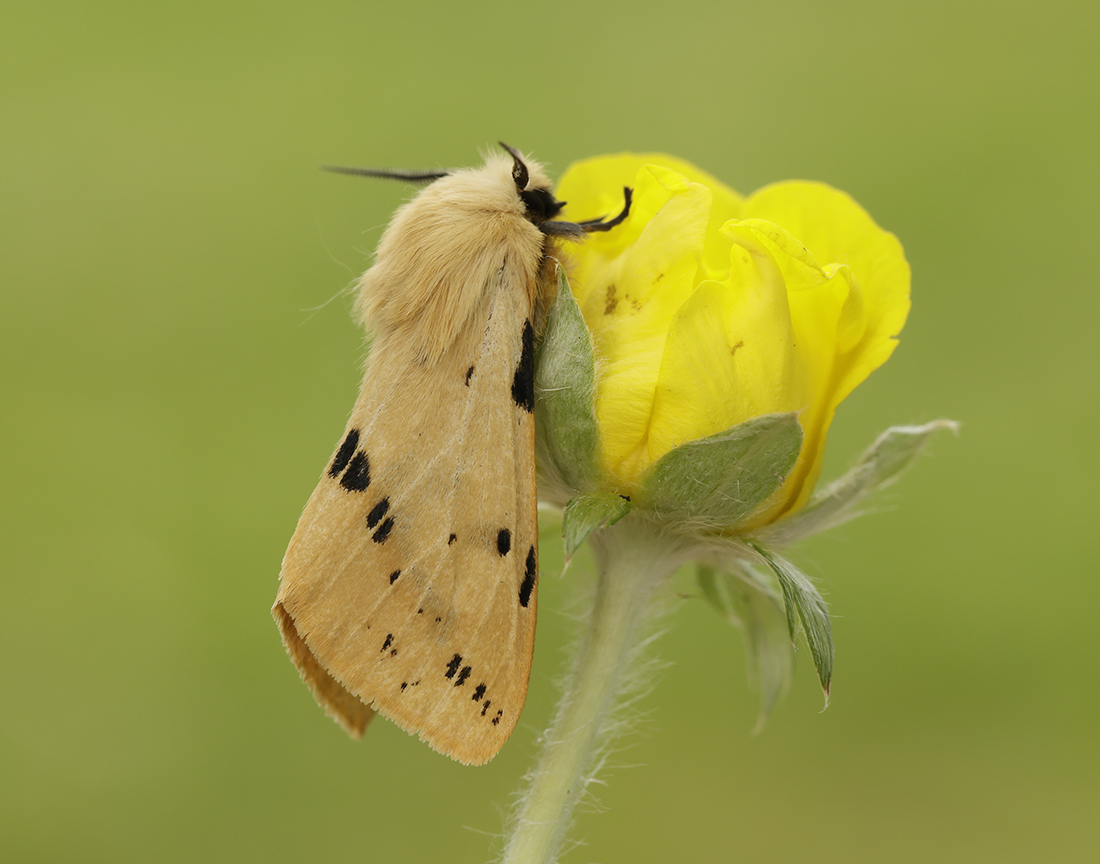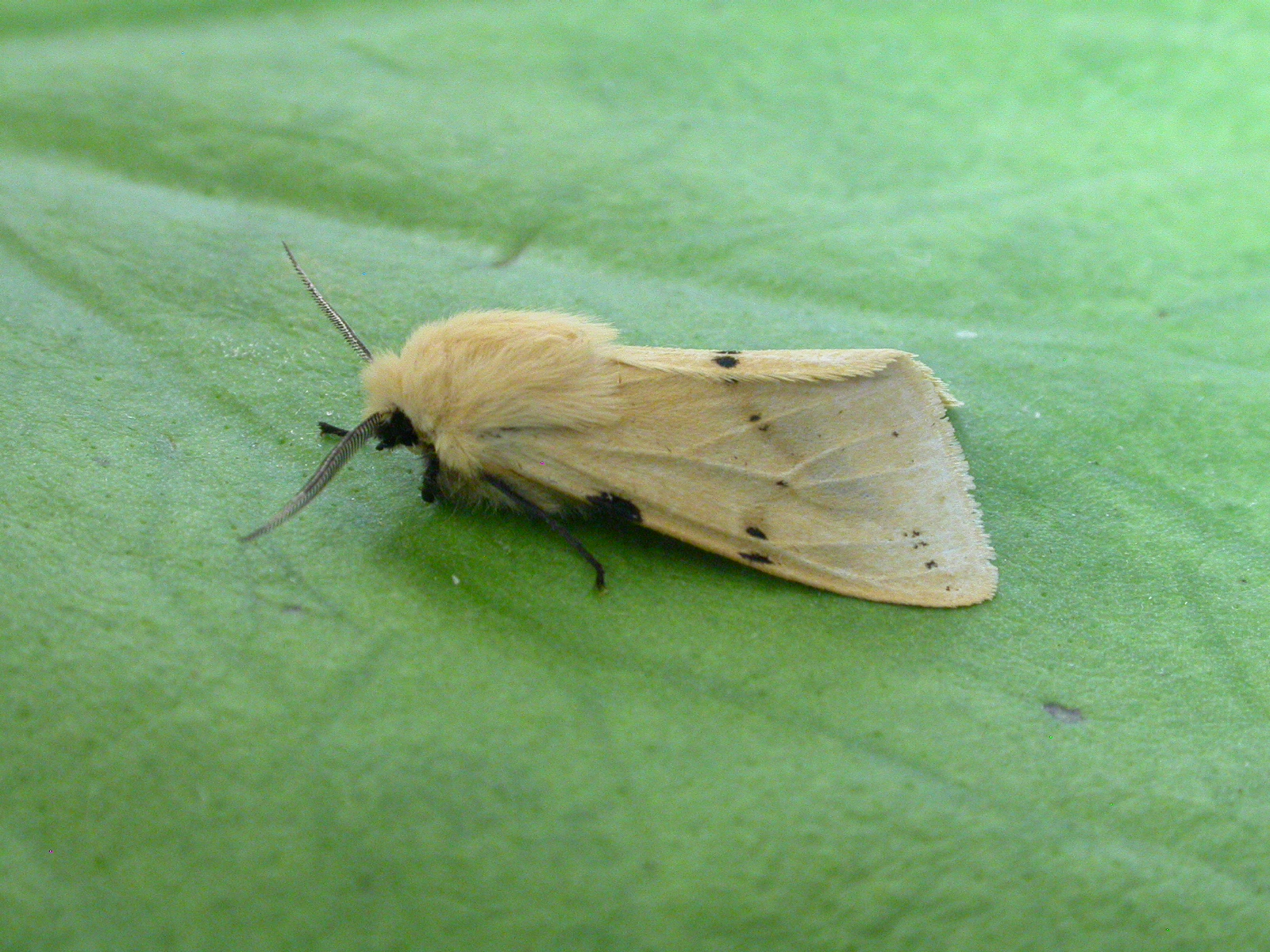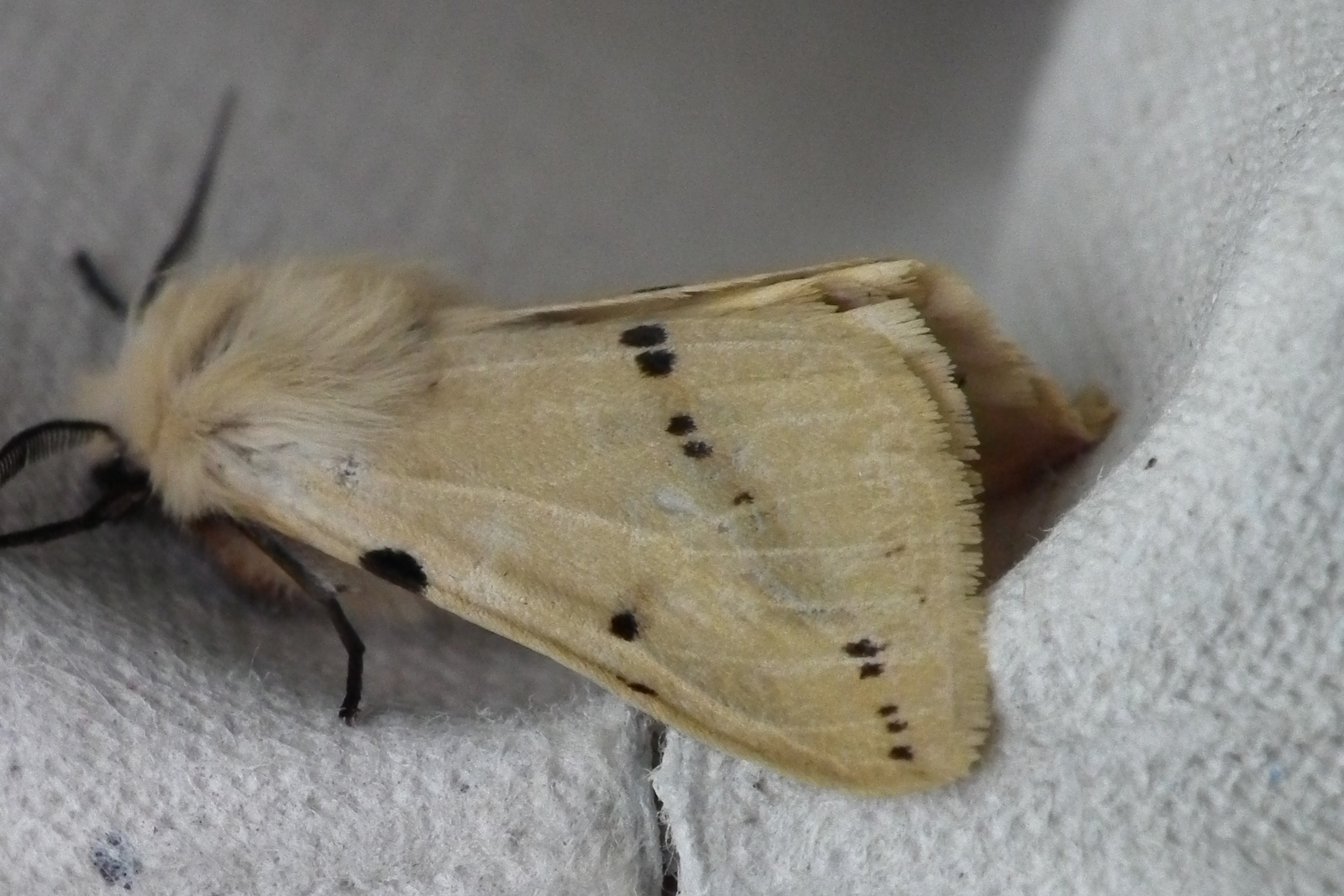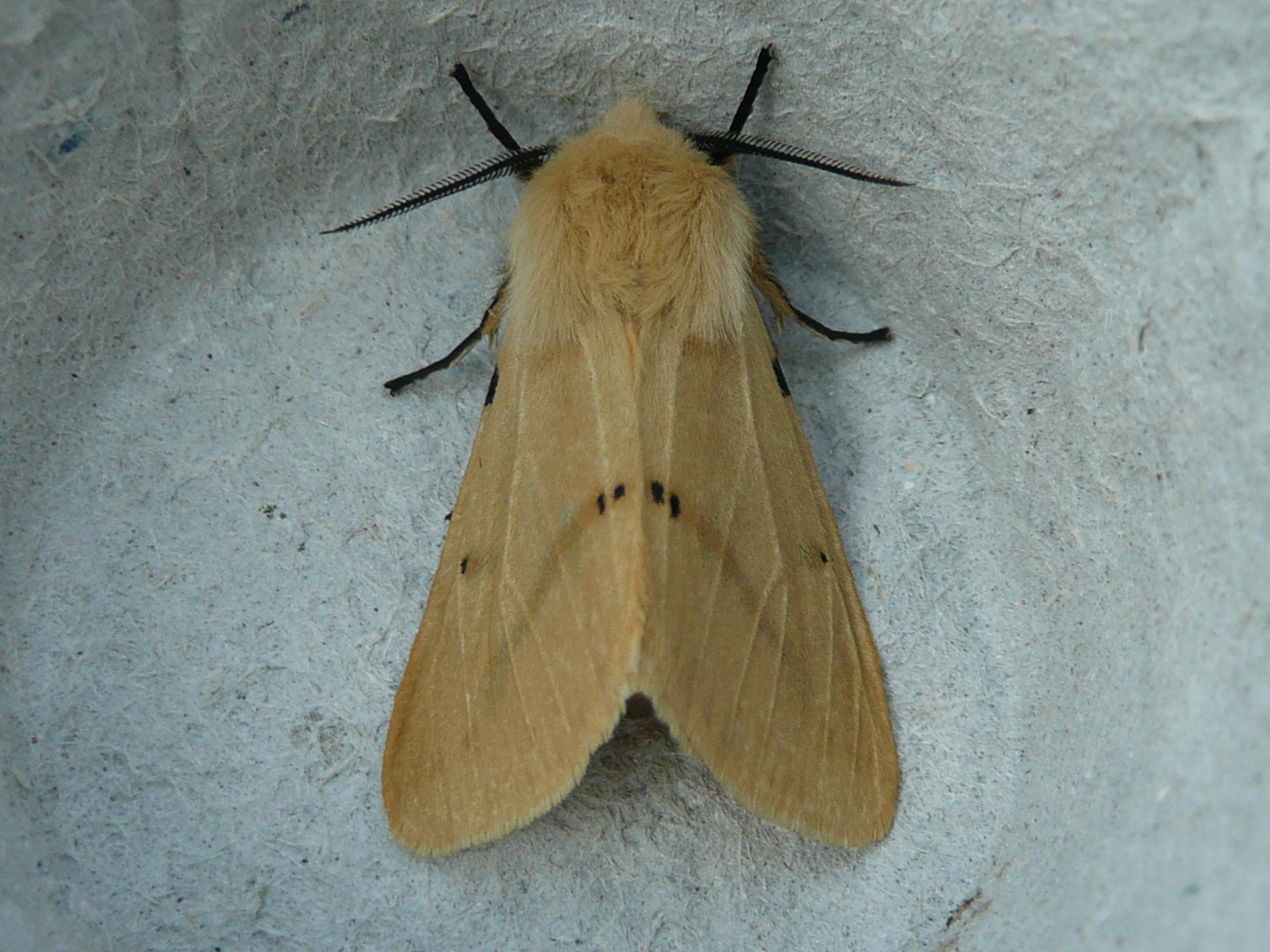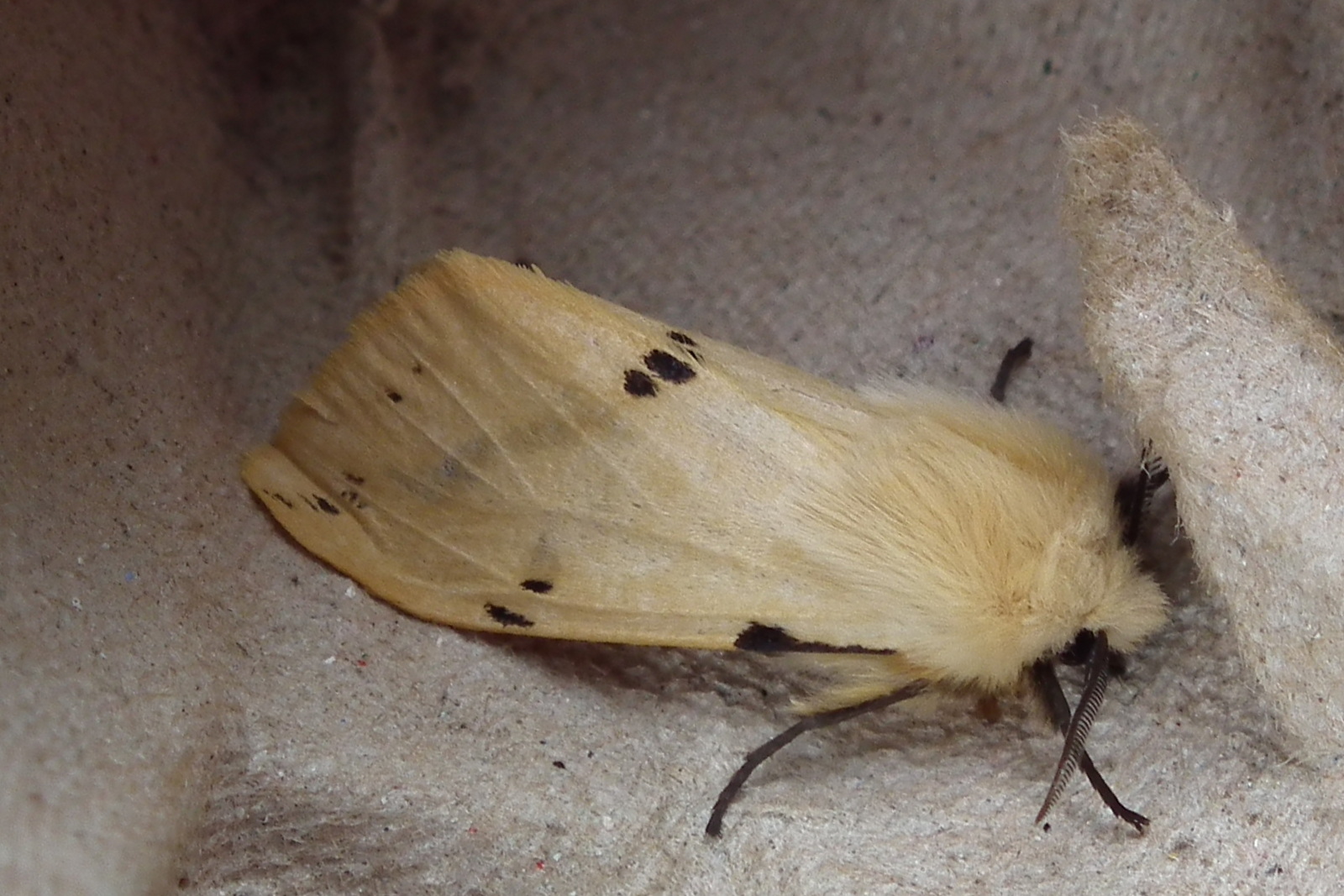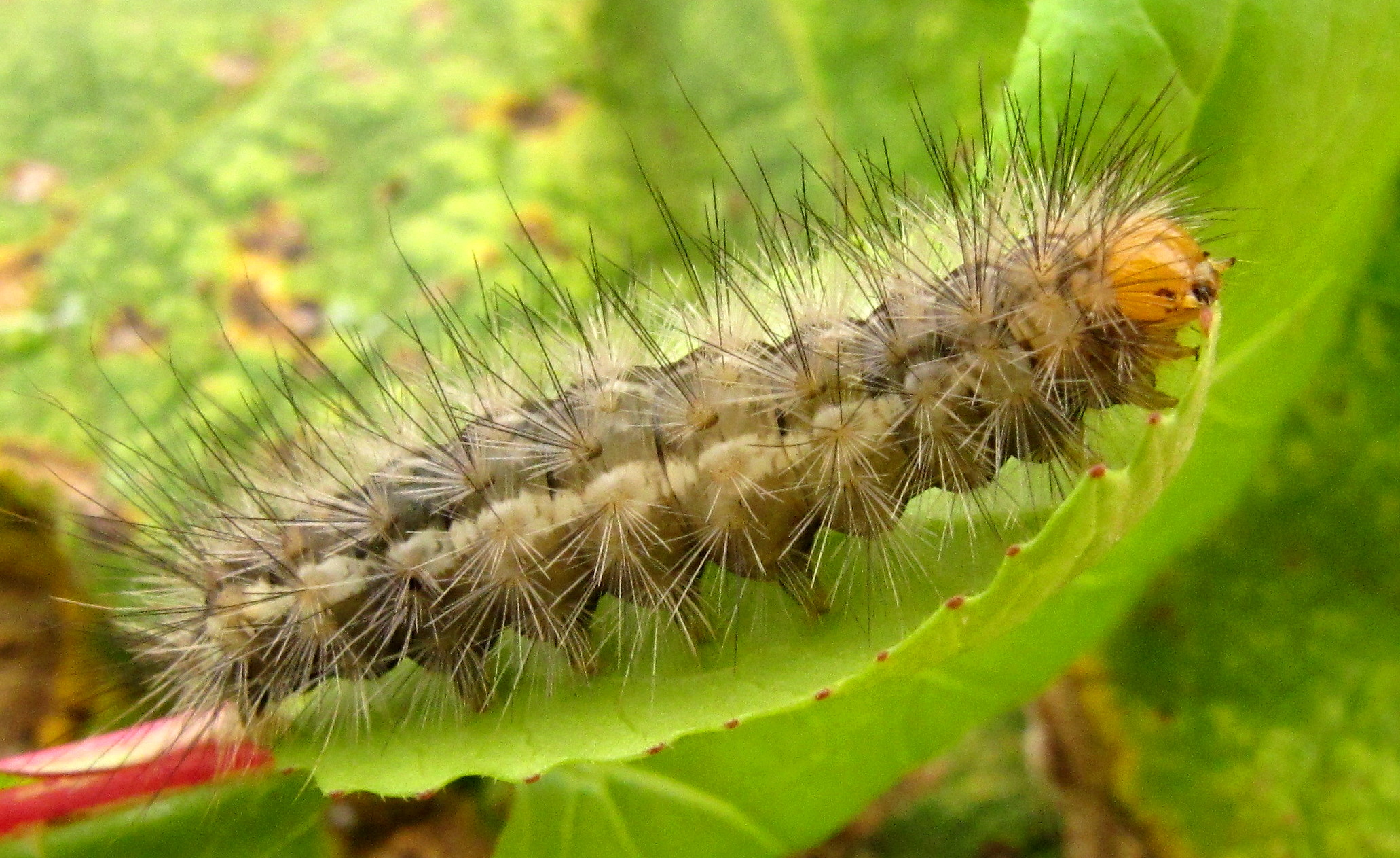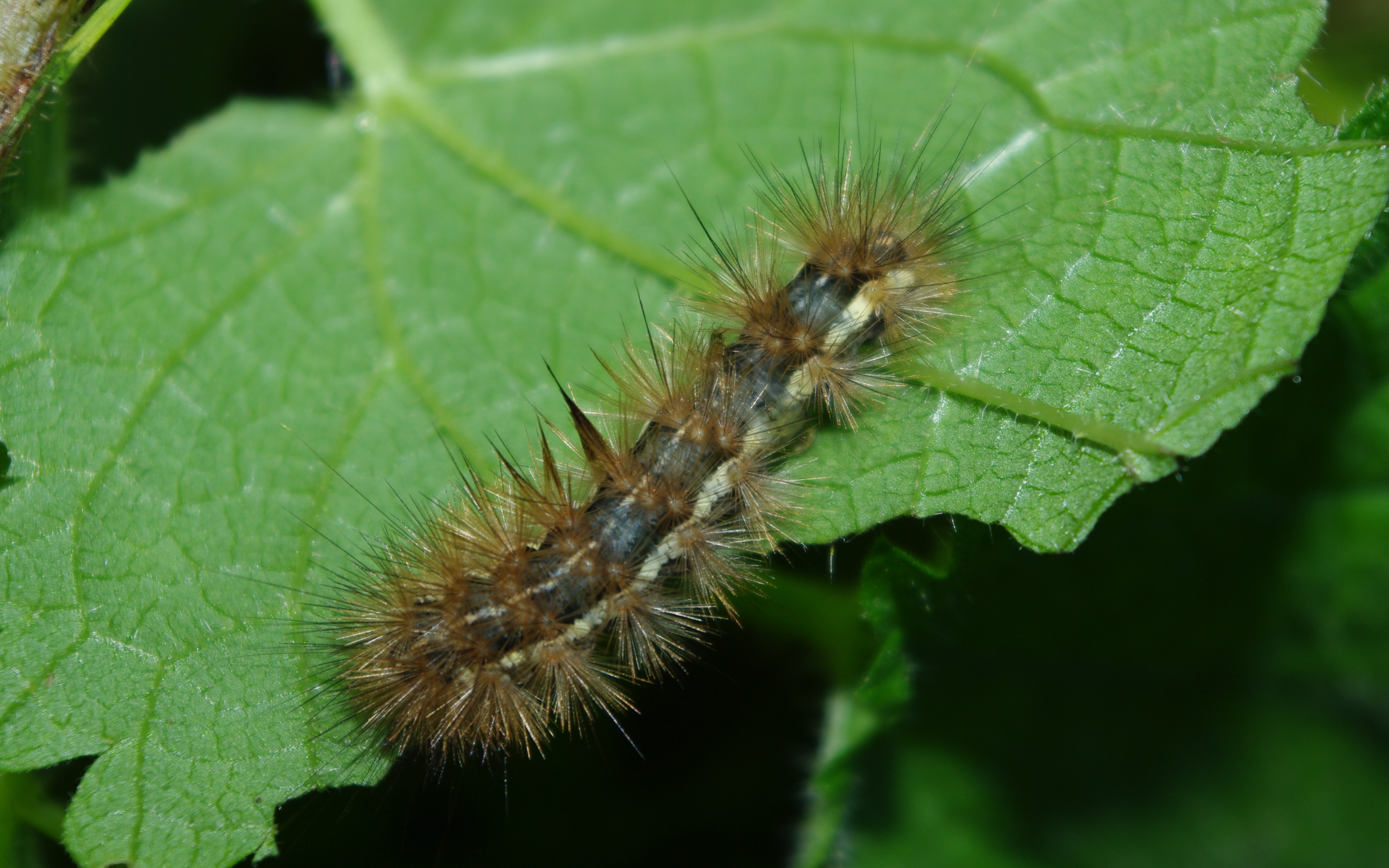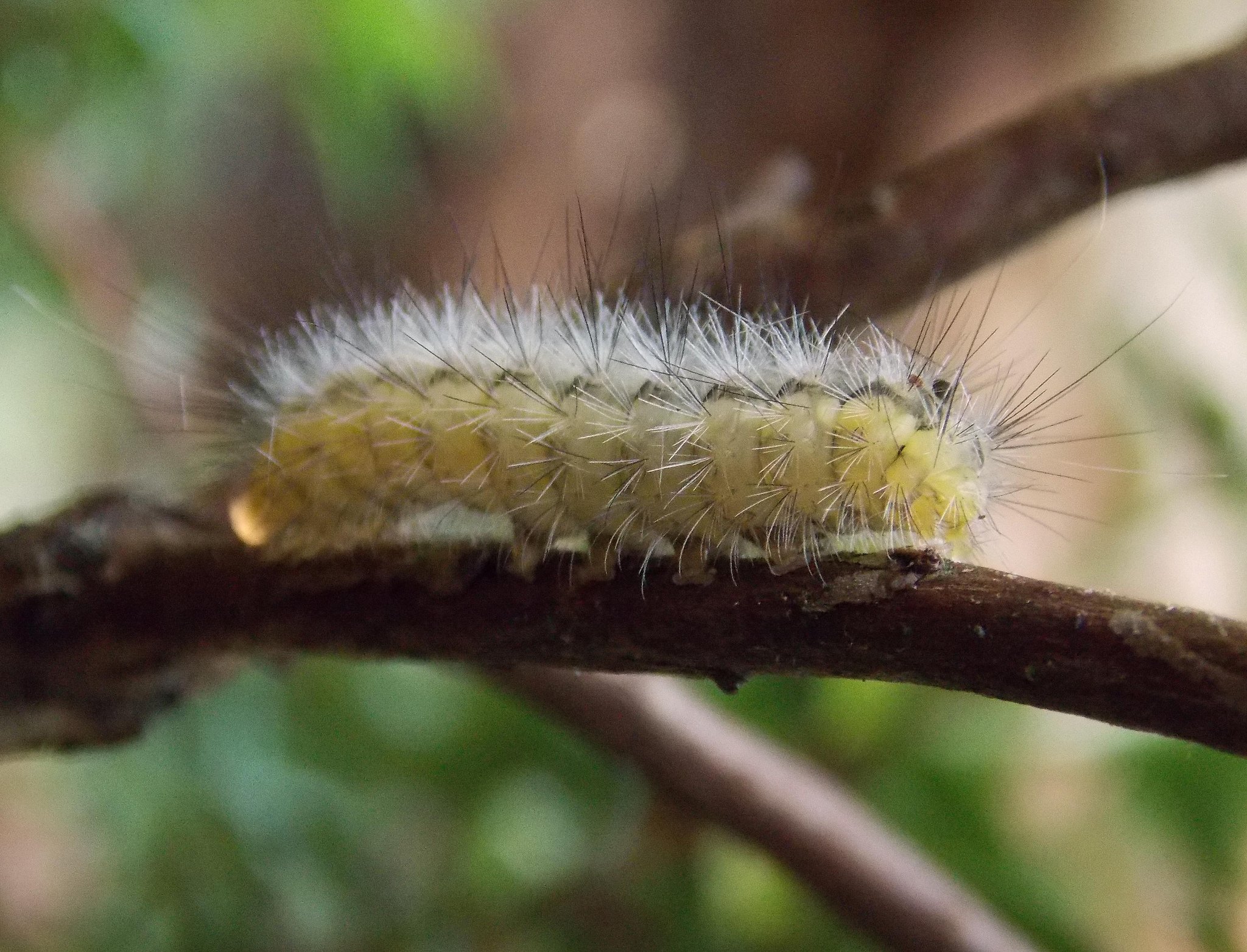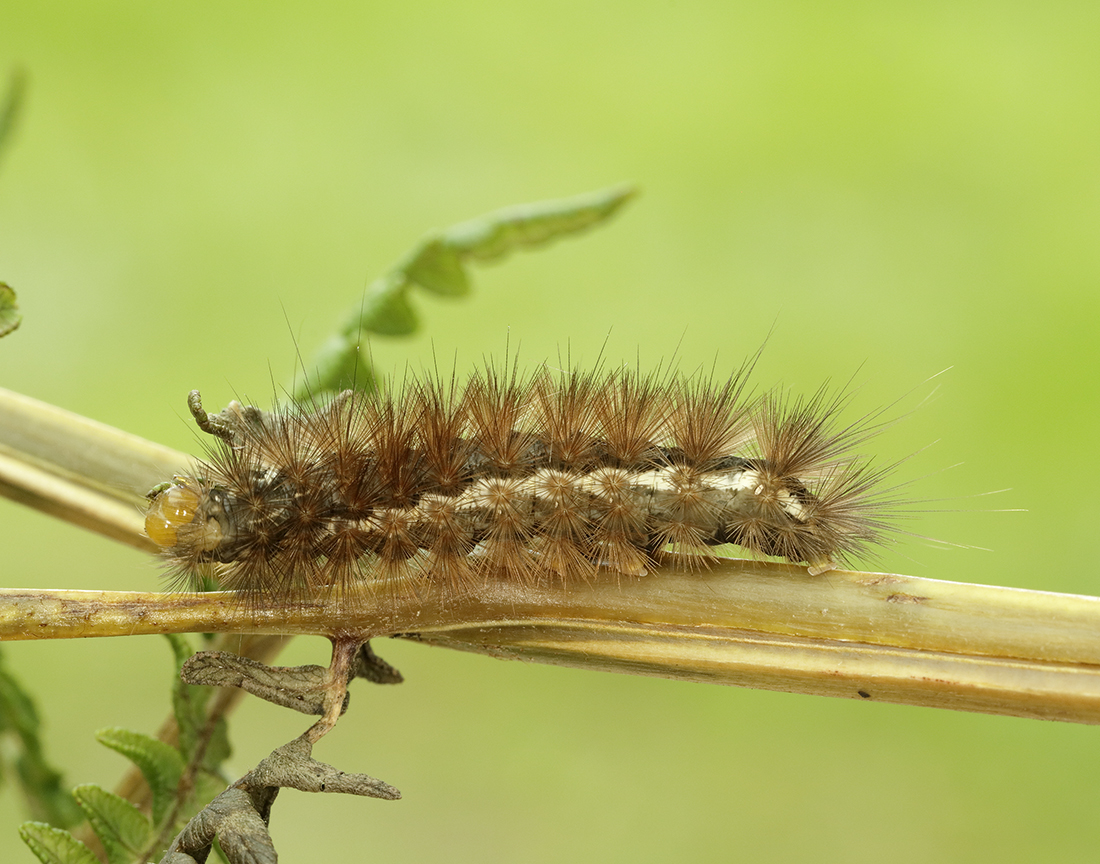Identification
The diagonal row of dark spots on the forewings will separate it from White Ermine.
Life cycle
One generation. Overwinters as a pupa in a cocoon. Larvae are present during July to October.
Larval foodplants
A wide variety of herbaceous plants, including Common Nettle, Honeysuckle and birches.
Habitat
Wide range of habitats.
History 1860-2010
Lennon (1863) had found it not common, but had a record from Kirkconnell. Douglas Robinson (1870-71) had found the larvae in August, 1870 on Almorness (VC73). K. J. Morton of Edinburgh (1900) whilst on a visit in July 1899 to Wigtownshire had found this species in the Monreith area. Gordon (1913) had found the Buff Ermine to be common at light at Corsemalzie (VC74) during the first two weeks of June. The larvae were abundant on hops growing on Corsemalzie House. Sir Arthur Duncan (1909-84) during his lifetime had found it at Closeburn, Tynron and Castlehill, Dumfries (all VC72).
During 1962-67 Pelham-Clinton had found it at Palnackie, Rockcliffe, Caulkerbush and Kirkbean (all VC73). During 1974-93 it was recorded from all seven Rothamsted stations with a good number of records. Then from 1992 to 2010 it had proved popular at Kirkton (VC72), Cally Woods and Kirkcudbright (VC73), with further records from a scattering of sites across the region.
